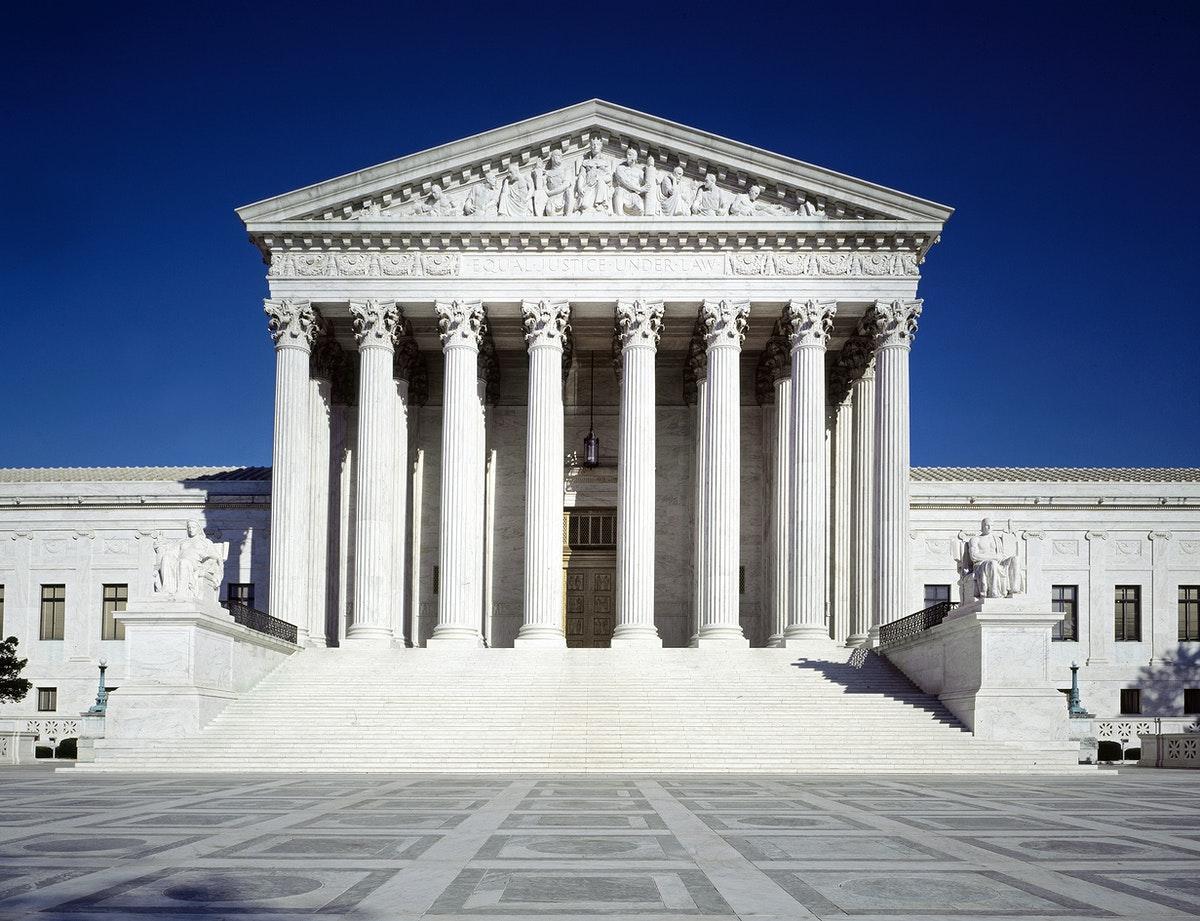
Matthew Rogosin
Matthew Rogosin is a Third Year Law Student at the University of Baltimore School of Law. He is interested in medical malpractice and criminal law, criminal defense, and post-conviction relief. Mr. Rogosin is currently working at an internship focusing on on the Juvenile Restoration Act of Maryland and volunteering at the Pro Bono Resource Center for the landlord-tenant court in Baltimore.

Before the Fourth of July, the Supreme Court will decide one landmark Second Amendment case and also decide whether to review at least two other cases involving a Second Amendment challenge to current Federal gun restrictions. In doing so, the Supreme Court will continue to shape the evolving landscape of the Second Amendment, which is relatively new in American Constitutional law.
Currently pending before the Supreme Court are three key cases that could invalidate Federal gun laws that are typically used to charge people with Federal gun amendments:
- United States v. Zackey Rahimi, Docket # 22-915
- United States v. Patrick Darnell Daniels, Jr., Docket # 23-376
- Merrick B. Garland, Attorney General v. Bryan David Range, Docket # 23-374
At issue in the Rahimi case is 18 U.S.C. 922(g)(8), which makes it a Federal felony to possess a firearm while a person is subject to a domestic violence restraining order.
The issue in the Daniels case is 18 U.S.C. § 922(g)(3), which makes it a Federal felony to possess a firearm by an unlawful user of addicted to a controlled substances. This currently includes people who have been prescribed medical marijuana or people who use marijuana in states where recreational use is legalized.
In the Range case, the challenge is to the Federal felon-in-possession ban contained in 18 U.S.C. § 922(g)(1), by far the most commonly charged Federal gun offense. This law criminalizes any possession of firearms by anyone convicted of any felony, including non-violent felonies.
Because of the Supreme Court’s definitive ruling in 2022 in New York State Rifle & Pistol Association, Inc. v. Bruen, 597 U.S. 1 (2022), most, if not all, of the current Federal restrictions on firearm possession are on the chopping block as unconstitutional. The vast majority of Federal restrictions on firearm possession came from the Gun Control Act of 1938, which criminalized possession of firearms by people convicted of violent felonies, and the Gun Control Act The current trend after Bruen is to strike down these restrictions because the only restrictions that existed at the time the Second Amendment was ratified in 1789 was prohibitions on the mentally insane and dangerous felons, i.e., violent felons.
We start our analysis with the beginning of Second Amendment jurisprudence. In District of Columbia v. Heller, the Supreme Court adopted an individual-rights theory of the Second Amendment based on its text and role in our country’s early history. District of Columbia v. Heller, 554 U.S. 570 (2008). In striking down a ban on handguns in the home, the Court sent a strong message: the right to defend yourself and your castle struck at the heart of the Second Amendment and was an individual right, not a state power to regulate a militia.
In Heller, the Court wrote that the Second Amendment was not absolute but was subject to “longstanding prohibitions” and well-crafted regulations. Heller, 554 U.S. 570 at 626-627, 635. The Court did not discuss what those prohibitions and regulations were, but the Court was equally clear that any limitations imposed should be consistent with “historical justifications.” Heller, at 635. “While courts may be free to ‘presume’ that many regulations …will ultimately be declared lawful, it does not eliminate the need to conduct a careful constitutional analysis.” Id.
Two years after Heller was decided, the Supreme Court reiterated in McDonald v. City of Chicago, that a person’s right to bear arms for self-defense is a “fundamental right… necessary to our system of ordered liberty.” McDonald v. City of Chicago, 561 U.S. 742, 778 (2010). In McDonald, the Supreme Court extended its holding from Heller, and held that the Fourteenth Amendment’s Due Process Clause incorporates the Second Amendment and makes it enforceable against the States. McDonald, 561 U.S. 742 at 791.
In 2022 the Supreme Court set forth a bright-line test in New York State Rifle & Pistol Association, Inc. v. Bruen, 597 U.S. 1 (2022). To determine whether a modern firearms law is unconstitutional, a court first determines whether the “Second Amendment’s plain text covers an individual’s conduct;” if so, then “the Constitution presumptively protects that conduct.” Bruen, 597 U.S. 1 at 22. Then the Court needs to determine whether the challenged restriction is “consistent with the Nation’s historical tradition of firearm regulation.” Bruen at 24. The Court held that to be “consistent with” historical regulations, the challenged regulation had to be a modern analogue to a recognized restriction at the time of the ratification of the Second Amendment. Id. at 30.
The Bruen Court ruled the Government bears the burden of demonstrating a tradition supporting the challenged law. Id. at 24. “Only by showing that the law does not tread on the historical scope of the right can the government ‘justify its regulation.’” Id.
Utilizing this test, the Fifth Circuit Court of Appeals and the Third Circuit Court of Appeals have struck down several key provisions of 18 U.S.C. § 922(g), the most commonly charged Federal firearms offense.
Soon the Court will announce its decision in United States v. Zackey Rahimi, Docket # 22-915. The case is fully briefed and oral arguments have been heard. The Justices are expected to release their decisions on or before June 30, 2024 when the current Supreme Court term ends for the summer.
In United States v. Rahimi, the defendant was charged in Federal court with a violation of 18 U.S.C. 922(g)(8) for firearm possession while subject to a domestic violence protective order, among other offenses. United States v. Rahimi, 61 F.4th 443 (5th Cir. 2023). That particular law makes it a Federal felony to possess a firearm while a person is subject to a domestic violence restraining order. Mr. Rahimi moved to dismiss the Indictment, alleging 18 U.S.C. § 922(g)(8) was unconstitutional under the Second Amendment, but the District Court denied the motion. He pled guilty and appealed his conviction to the United States Court of Appeals for the Fifth Circuit.
The Fifth Circuit reversed and vacated the conviction. Utilizing the test set out in the Supreme Court’s decision in 2022 in New York State Rifle & Pistol Association, Inc. v. Bruen, 597 U.S. 1 (2022), the Fifth Circuit Court of Appeals held that 18 § 922(g)(8)’s restriction of Second Amendment rights did not fit within the Nation’s historical tradition of firearm regulation and held 18 U.S. § 922(g)(8) was unconstitutional under the Second Amendment. Rahimi, 61 F.4th 443 at 460.
You can read the relevant Supreme Court documents and listen to or read the oral arguments HERE:
Docket # 22-915 – United States v. Zackey Rahimi – Transcripts of Oral Argument
Docket # 22-915 – United States v. Zackey Rahimi – Brief for Respondent Zackey Rahimi
Docket # 22-915 – United States v. Zackey Rahimi – Joint Appendix
Docket # 22-915 – United States v. Zackey Rahimi – Brief for Petitioner United States of America
Also pending before the Supreme Court is United States v. Patrick Darnell Daniels, Jr., Docket # 23-376. That case involves a Second Amendment challenge to 18 U.S.C. § 922(g)(3), which makes it a Federal felony to possess a firearm by an unlawful user of addicted to a controlled substances. The Supreme Court has yet to decide whether it will review the Daniels case; a decision is expected before June 30, 2024.
In United States v. Daniels, the defendant was arrested during a traffic stop where police officers smelled burnt marijuana. The officers not only found marijuana cigarette butts in the ashtray but also a loaded pistol and a loaded rifle. United States v. Daniels, 77 F.4th 337, 340 (5th Cir. 2023). After the defendant was taken to the local DEA office, he admitted he was a regular user of the substance ever since high school, smoking “approximately fourteen days out of a month.” Id. Based on his statement, Daniels was charged with a violation of 18 U.S.C. § 922(g)(3), which makes it illegal for any person who is an unlawful user of or addicted to a controlled substance to possess a firearm.
While the Indictment was pending in the Federal District Court, the Supreme Court decided Bruen, prompting Mr. Daniels to move to dismiss the Indictment. In his motion, Daniels challenged the constitutionality of 18 U.S.C. § 922(g)(3). The District Court denied the motion, reasoning that the defendant was not part of “the people” to whom the Second Amendment applied because he was not a “law abiding, responsible citizen.” Id. The District Court also compared 18 U.S.C. §922(g)(3) to laws disarming felons and the mentally ill, which the Supreme Court ruled in District of Columbia v. Heller, 554 U.S. 570 (2008) were “presumptively lawful.” Daniels at 340, (quoting Heller at 627 n.26). Daniels was found guilty after a jury trial and appealed.
The Fifth Circuit reversed and vacated the conviction. The Fifth Circuit held that “[e]ven as a marihuana user, Daniels is a member of our political community” as defined by Heller; therefore, the Second Amendment applied to him and he had a presumptive right to keep and bear arms. Id. at 342. The Court of Appeals also reasoned that,
“[m]ore than just ‘model citizen[s]’ enjoy the right to bear arms.” United States v. Rahimi, 61 F.4th 443, 453 (5th Cir. 2023), cert. granted, No. 22-915, 2023 U.S. LEXIS 2830, 2023 WL 4278450 (June 30, 2023). Indeed, Rahimi held that citizens accused of domestic violence still had Second Amendment rights. It reasoned that when Heller and Bruen used the phrase “law-abiding,” it was just “shorthand” to “exclude from the . . . discussion” the mentally ill and felons, people who were historically “stripped of their Second Amendment rights.” Id. at 452. All others are presumptively included in the Second Amendment’s amendment.
Daniels, 77 F.4th 337, at 342-343.
Another case which the Supreme Court will decide to review is Merrick B. Garland, Attorney General v. Bryan David Range, Docket # 23-374. In that case the issue is whether 18 U.S.C. § 922(g)(1)’s prohibition on felons from possessing firearms violates the Second Amendment.
In the Range case, the en banc (full court) Third Circuit held that 18 U.S.C. § 922(g)(1)’s prohibition on felons from possessing firearms violates the Second Amendment. Range v. Attorney General, United States of America, 69 F.4th 96 (3rd Cir. 2023). The Third Circuit reasoned even with his prior felony conviction, Range was one of “the people” who enjoys Second Amendment protection. Id. at 102-103. Having decided that Range fell within the scope of the Second Amendment, the Third Circuit then reasoned the ban on felons from possessing firearms started with the Federal Firearms Act of 1938, enacted some two hundred years after the second amendment. The Federal Firearms Act of 1938, Pub. L. No. 75-785, §§ 1(6), 2(f), 52 Stat. 1250, 1250–51 (1938), Range at 104. The Third Circuit noted that the 1938 Act only prohibited violent criminals, whereas the amended version of 18 U.S.C. §922(g)(1) later expanded the prohibition to all felons, not just those convicted of violent offenses. Id. The Third Circuit held that these Acts, passed well after the ratification of the Bill of Rights, fell “well short of ‘longstanding’ for purposes of demarcating the scope of a constitutional right.” Id. at 104. Therefore, the Third Circuit struck down §922(g)(1) as unconstitutional.
Two Federal District Courts have found 18 U.S.C. § 922(g)(1)’s prohibition on felons to be violative of the Second Amendment. In United States v. Bullock, the Southern District of Mississippi dismissed an Indictment charging the defendant with a violation of 18 U.S.C. §922(g)(1) based on his prior conviction of a felony years before and his possession of a firearm inside his home. United States v. Bullock, 679 F.Supp.3d 501 (S.D. Miss. 2023). The Court recognized that the “federal felon-in-possession ban was enacted in 1938, not 1791 or 1868 — the years the Second and Fourteenth Amendments were ratified.” Bullock, 679 F.Supp.3d 501 at 505.
In United States v. Martin, the Southern District of Illinois dismissed an Indictment charging the defendant with a violation of 18 U.S.C. § 922(g)(1). United States v. Martin, No. 23-CR-40048-SMY, 2024 WL 728571 at *1 (S.D. Ill. February 22, 2024). The Court ruled that even as a felon, Martin was “included in ‘the people’ covered by the Second Amendment, and that his conduct is presumptively protected.” United States v. Martin No. 23-CR-40048-SMY, 2024 WL 728571 at *4 (S.D. Ill. February 22, 2024). The Court then turned to the second inquiry under Bruen and found that “there were no laws categorically restricting individuals with felony convictions from possessing firearms at the time of the Founding or ratification of the Second or Fourteenth Amendments.” United States v. Martin, No. 23-CR-40048-SMY, 2024 WL 728571 at *5 (S.D. Ill. February 22, 2024). Utilizing that approach, the Court found 922(g)(1) unconstitutional.
Although it is not currently before the Supreme Court, there will likely be a challenge to 18 U.S.C. § 922(g)(5)(A) which prohibits illegal aliens from firearm possession. Currently there are an estimated 11 million illegal aliens in the United States, according to the Migration Policy Institute. https://www.migrationpolicy.org/data/unauthorized-immigrant-population/state/US.
A majority of the 11 million illegal aliens in the United States are law-abiding, responsible people who are gainfully employed as productive members of society. They too enjoy the right to self-defense – the core of the Second Amendment:
As we stated in Heller and repeated in McDonald, individual self-defense is ‘the central component’ of the Second Amendment right.” New York State Pistol Assoc. v. Bruen, 597 U.S. 1 at 29 (2022)(emphasis added), quoting McDonald, 561 U.S., at 767; see also Heller at 628, (“the inherent right of self-defense has been central to the Second Amendment right”). Therefore, whether modern and historical regulations impose a comparable burden on the right of armed self-defense and whether that burden is comparably justified are “‘central’” considerations when engaging in an analogical inquiry. McDonald, 561 U. S., at 767, 130 S. Ct. 3020, 177 L. Ed. 2d 894 (quoting Heller, 554 U. S., at 599, 128 S. Ct. 2783, 171 L. Ed. 2d 637).
New York State Pistol Association. v. Bruen, 597 U.S. 1, 29 (2022).
The Second Amendment refers to the “right of the people to keep and bear arms.” U.S. CONST. Amend. II. The term “the people” is a term of art used throughout the Constitution and refers to a class of persons who are part of a national community or who have otherwise developed sufficient connection with this country to be considered part of that community. United States v. Verdugo-Urquidez, 494 U.S. 259, 265 (1990) (emphasis added), citing United States ex rel. Turner v. Williams, 194 U.S. 279, 292 (1904).
The Supreme Court specifically reasoned in Heller “the ‘plain text of the Second Amendment’ offers protection ‘unambiguously…to all members of the political community, not an unspecified subset.’” District of Columbia v. Heller, 554 U.S. 570, 580 (2008). In other words, Second Amendment protections extend to all of the “people,” not just those deemed “law-abiding” or “responsible” by the Government. Heller, 554 U.S. 570 at 581.
The First Amendment speaks of “the right of the people” to peaceably assemble, petition the Government for a redress of grievances, and freely practice their religion. U.S. CONST. amend. I. The second amendment speaks of the right of the people to keep and bear arms…” U.S. CONST. amend. II. The Fourth Amendment speaks of “the right of the people” to be secure against unreasonable and warrantless searches and seizures. U.S. CONST. amend. IV. The Fifth Amendment guarantees the right of each “person” to be free from double jeopardy, receive Due Process of Law, not be compelled to be a witness against themselves, and not suffer deprivation of private property without just compensation. U.S. CONST. amend. V. The Sixth Amendment speaks of every accused (without distinction) to have the right to a jury trial, to confront the witnesses against him, and to the assistance of counsel. U.S. CONST. amend. VI. The Eighth Amendment prohibits excessive bail and cruel and unusual punishments against individuals (without distinction). U.S. CONST. amend. VIII. The Ninth Amendment specifies that the enumeration of the rights set forth in the Bill of Rights “shall not be construed to deny or disparage others retained by the people.” U.S. CONST. amend. IX. The Tenth Amendment reserves rights to “the people.” U.S. CONST. amend. X. None of the provisions of the Bill of Rights make a distinction between citizens and non-citizens.
As far back as 1982 the Supreme Court held in Plyler v. Doe that, “[w]hatever his status under the immigration laws, an alien is surely a ‘person’ in any ordinary sense of that term. Plyler v. Doe, 457 U.S. 202 (1982). “Aliens, even aliens whose presence in this country is unlawful, have long been recognized as ‘persons’ guaranteed due process of law by the Fifth and Fourteenth Amendments.” Plyler v. Doe, 457 U.S. at 210 (emphasis added), citing Shaughnessy v. Mezei, 345 U.S. 206, 212 (1953); Wong Wing v. United States, 163 U.S. 228, 238 (1896); Yick Wo v. Hopkins, 118 U.S. 356, 369 (1886). The Court has clearly held the Fifth Amendment protects undocumented aliens from invidious discrimination by the Federal Government. Mathews v. Diaz, 426 U.S. 67, 77 (1976).
In 1990, the Court also held that undocumented aliens are “protected by the Fourth Amendment, and by the First and Second Amendments.” United States v. Verdugo-Urquidez, 494 U.S. 259, 265 (1990) (emphasis added).
Various Federal Circuit Courts have applied the Supreme Court’s rulings above and held that “unauthorized status cannot support a per se exclusion from ‘the people’ protected by the Bill of Rights.” United States v. Meza-Rodriguez, 798 F.3d 664, 672 (7th Cir. 2015).
One major factor for the Supreme Court to review a case is whether there is a split of authority amongst the Federal Circuit Courts. If there is a split this would require Supreme Court intervention to settle the dispute regarding the law. While it is true that no Circuit has yet found 18 U.S.C. § 922(g)(5)(A) unconstitutional, there are only a few reported decisions on this particular statute, and the majority of them pre-date Bruen. Nevertheless, there appears to be a split of authority in the Circuits as to whether “the people” can include unlawful aliens.
The Second Circuit assumed, in United States v. Perez without deciding, the defendant in that case (an undocumented immigrant) enjoyed Second Amendment protections. United States v. Perez, 6 F.4th 448, 450 (2d Cir. 2021), cert. denied, ___ U.S. ___, 142 S. Ct. 1133, 212 L.Ed.2d 20 (2022). However, the Perez Court held that 18 U.S.C. §922(g)(5)(A) was still constitutional under the since-rejected rational basis review that predated Bruen. Perez, 6 F.4th 448, at 455.
The Fourth Circuit has also held that illegal aliens are not included in “the people” under the Second Amendment. United States v. Carpio-Leon, 701 F.3d 974 (4th Cir. 2012), cert denied 571 U.S. 831 (2013).
The Eighth Circuit has found that 18 U.S.C. §922(g)(5)(A) is constitutional because in that Court’s view, “the people” does not include undocumented aliens. United States v. Sitladeen, 64 F.4th 978, 982 (8th Cir. 2023).
The Ninth Circuit recognized in United States v. Torres, that while all of the Circuits had held that §922(g)(5)(A) was constitutional, there was no unanimity in the various Circuits reasoning. United States v. Torres, 911 F.3d 1253, 1257 (9th Cir. 2019). In Torres, the Ninth Circuit held that it could “assume (without deciding) that unlawful aliens, such as Mr. Torres, fall within the scope of the Second Amendment right as articulated under Heller and Verdugo-Urquidez and proceed to the appropriate scrutiny we should give to §922(g)(5).” Torres, 911 F.3d at 1261, see also District of Columbia v. Heller, 554 U.S. 570 (2008), see also McDonald v. City of Chicago, 561 U.S. 742, 778 (2010), see also Silvester v. Harris, 843 F.3d 816, 826-27 (9th Cir. 2016) (“We assume, without deciding, that the regulation [imposing a waiting period between purchase and delivery of a firearm] is within the scope of the Amendment and is not the type of regulation that must be considered presumptively valid.”).
The Tenth Circuit has also assumed “that the Second Amendment, as a ‘right of the people,’ could very well include, in the absence of a statute restricting such a right, at least some aliens unlawfully here.” United States v. Huitron-Guizar, 678 F.3d 1164, 1169 (10th Cir. 2012).
The Eleventh Circuit also assumed for the purposes of its decision that the defendant was included in “the people” and still upheld his conviction on narrower grounds in United States v. Jimenez-Shilon, 34 F.4th 1042, 1045 (11th Cir. 2022).
Thus, there is disagreement among several Circuits as to whether undocumented immigrants are included within “the people” as defined by the Second Amendment.
If undocumented immigrants enjoy the same protections of all of the other amendments guaranteed in the Bill of Rights, it must necessarily follow that the personal right to keep and bear arms for purposes of self-defense, guaranteed by the Second Amendment, would also apply to non-citizens equally.
Now all that is needed is some otherwise law-abiding, gainfully employed illegal alien with sufficient ties to their community to face prosecution for firearm possession for self-defense purposes to take their case to the Supreme Court.
GENERAL SEARCH TERMS (TAGS)
Criminal Defense lawyer, criminal defense attorney, Federal appeal lawyer, Federal appeals lawyer, Federal appeals lawyers, Federal appeal attorney, Federal appeal attorneys, Federal Appeals Attorney, Federal Appeals Attorneys, Federal criminal defense lawyer, federal criminal appeal lawyer, Maryland criminal law, Maryland criminal defense, Maryland post-conviction relief
SPECIFIC SEARCH TERMS (TAGS)
Baltimore, University of Baltimore, School of Law, Supreme Court, law student




